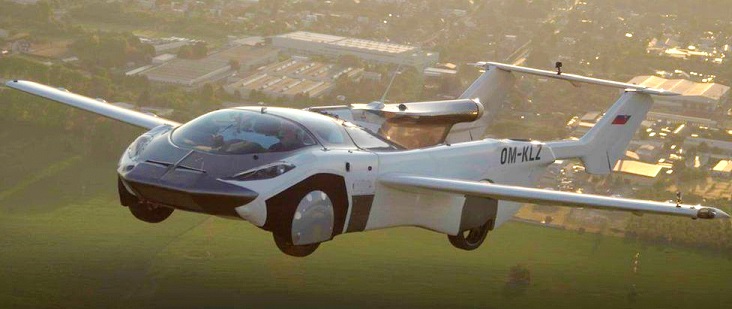ITSdigest
Analyst firm Gartner announced "Seven Disruptions CIOs Might Not See Coming" and ITS made the list twice, with flying autonomous vehicles and wireless electric vehicles (EVs).

Photo from BBC
CIOs must take time to consider "what if" scenarios to avoid being blindsided by social, behavioral and technological disruptions, according to Gartner.
Speaking at Gartner IT Symposium/Xpo in Australia, David Yockelson, VP analyst at Gartner, said many disruptions that seem futuristic may be closer than we think. “Disruptions are fundamental shifts that create lasting change, and successful organizations will be those that are prepared to address them,” Yockelson said. “We need to keep asking 'what if' to remain open to opportunities presented by disruptions.”
Yockelson highlighted seven key disruptions that technology executives should consider in the next five years. The following are two that impact transportation technology.
Flying cars
Flying autonomous vehicles, or unmanned aerial vehicles (UAVs), are for carrying passengers, primarily over short distances in urban areas. These encompass self-operating aircrafts that are sometimes referred to as "flying cars" or passenger drones and are designed to operate without a human pilot. Several companies are working on new aircraft piloted by artificial intelligence and designed to create a faster, less expensive, safer, and lower carbon way to execute air travel, primarily in congested areas. The first flying taxi service is scheduled to launch in 2024.
Notwithstanding potential regulatory challenges, CIOs should assess what problems in transportation — moving people and cargo — might be solved by using these vehicles.
Wireless EV Charging
As it becomes available, wireless charging will make the most sense for fleet vehicles such as buses and taxis. These vehicles can make effective use of dynamic charging to extend range and reduce costs.
Subsequently, residential installations will be the biggest market for wireless vehicle charging, as EV owners enjoy the modest convenience of not having to plug a cable in. However, looking out beyond that time, Gartner expects that private housing estates and campus sites will overtake in-home installations by volume.




